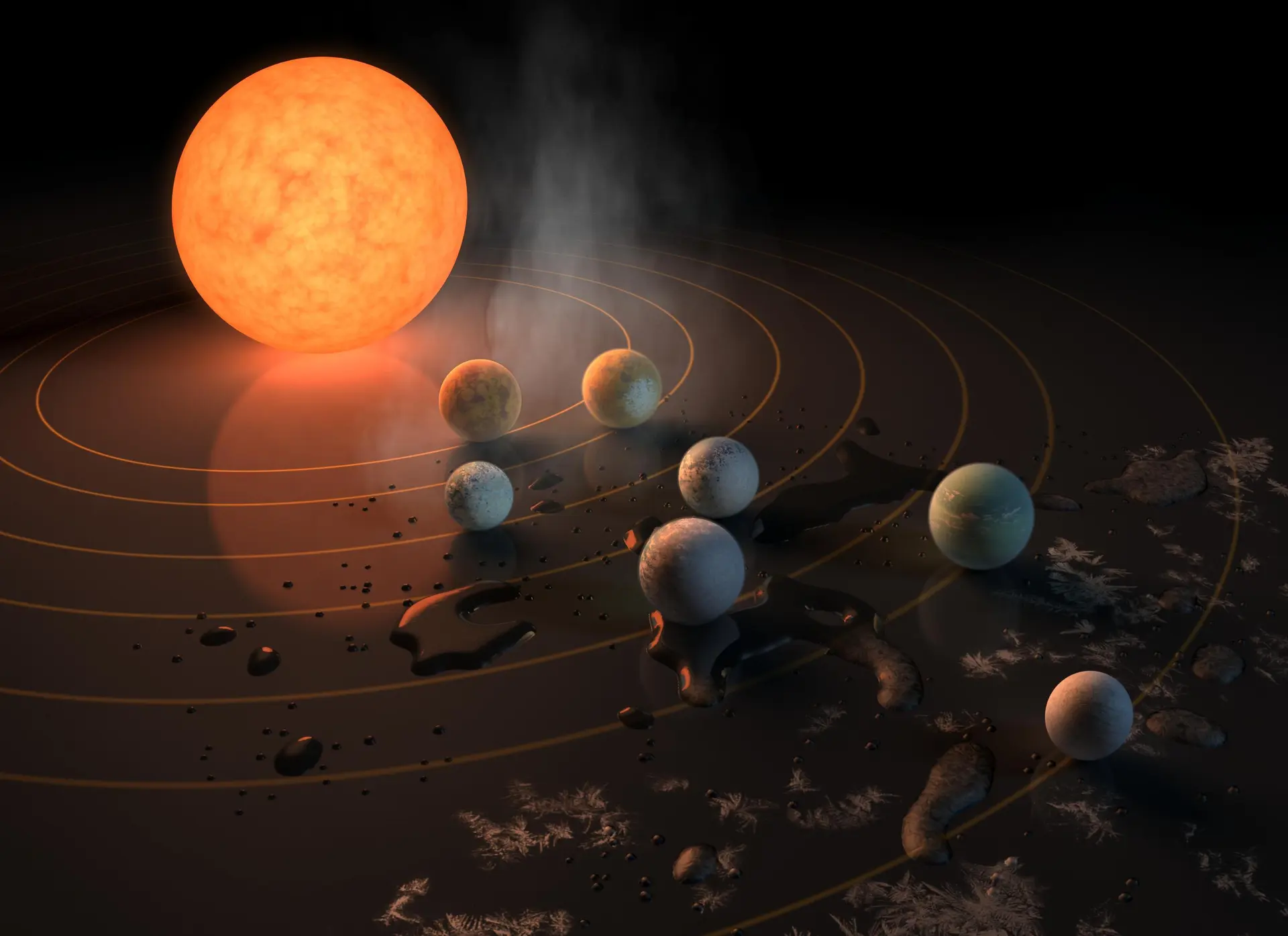Scientists ‘pushed’ the boundaries of the solar system
- July 30, 2024
- 0
The Oort cloud is considered the farthest hypothetical boundary of the solar system. This region is a little more than a light-year away from us. A new mathematical
The Oort cloud is considered the farthest hypothetical boundary of the solar system. This region is a little more than a light-year away from us. A new mathematical

The Oort cloud is considered the farthest hypothetical boundary of the solar system. This region is a little more than a light-year away from us. A new mathematical model developed by two American scientists has shown that our system actually extends much further than previously thought. They have discovered a very distant region of space where space objects could theoretically be subject to the gravitational influence of our star. If the prediction is correct, the scientific community will probably have to rethink the boundaries of the solar system.
Many experts believe that the boundary of the solar system ends at the point where the gravitational influence of our star on cosmic bodies becomes less than the gravitational influence of other stars. The space around an astronomical object (the Sun, other stars, planets and moons) within which it can hold smaller bodies is called the Vertex Sphere.
In the case of our star, the Oort cloud is considered the hypothetical Oort cloud, or rather its outer part. It is a dense sphere of trillions of icy debris that surrounds the Sun at a distance of just over a light year. Why hypothetical? So far, scientists have not confirmed its nature through observation, but several circumstantial facts suggest that the Oort cloud exists.
Researchers have long been trying to determine the boundaries of the solar system, to understand at what exact distance our sun ceases to affect other objects with its gravity.
American mathematician Edward Belbruno (Edward Belbruno) from Yeshiva University in New York and former NASA Chief Scientist James Green (James Green) attempted to determine the gravitational range of the Sun using computer experiments.
Scientists modeled our star and the surrounding area and found that there is an area 3.81 light-years away from us where space objects can be exposed to the gravitational influence of the Sun. This is much further than the outer part of the hypothetical Oort cloud. The researchers reported the results of their work in a paper published on the website of the electronic preprint archive. arXiv.
Belbruno and Greene’s calculations showed that there is a region between the Sun and the center of the Galaxy that resembles the Lagrange points. These points are located inside a system of two large bodies, in the plane of their orbits there are equilibrium regions where the gravitational balance is felt. A small body arriving at such a point will be at rest with respect to the first and second bodies, since it will be attracted to both with the same force.
Lagrange points can be found in our solar system: for example, the Sun-Earth system has the L2 Lagrange point, where scientists use the gravitational pull of the Earth and the Sun to hold spacecraft, such as the James Webb Orbital Observatory, in place. This keeps the telescope stable, saving fuel for other purposes.
The mathematical model used by Belbrun and Green in their study helped identify two regions in the cosmic sphere where objects first behave like Lagrange points, then suddenly change direction. In these regions, the gravitational forces of the Sun and the Milky Way interact with each other, but at some point the gravitational force of our star becomes stronger, forcing cosmic bodies into an unusual orbit around the star.
According to the researchers, objects entering this region will initially follow an elliptical orbit, but over time their orbits will begin to change and resemble the Mandelbrot set, a fractal pattern of infinitely symmetrical vortices and shapes. In fact, these objects will remain in the new orbit forever, not being thrown back into interstellar space and not colliding with the Sun.
But the model assumed that they could be “destroyed” by the gravitational influence of the red dwarf Proxima Centauri, the closest star to the Sun, which lies just 4.2 light-years away.
The authors of the scientific article noted that this area is very interesting from a scientific point of view, because it can become a trap for certain types of objects, such as orphan planets or interstellar comets and asteroids like Oumuamua. According to scientists, the area predicted by the mathematical model should be studied with the help of powerful telescopes, for example, the wide-angle research telescope-reflector of the Vera Rubin observatory, which will be operational in 2025.
If scientific instruments detect orphan planets, comets or asteroids captured by the Sun’s “gravitational grip” in this area, then Belbruno and Green’s hypothesis will be correct and the gravitational influence of our star will extend much further than previously thought. In this case, the hypothetical boundaries of the solar system will need to be revised.
Source: Port Altele
As an experienced journalist and author, Mary has been reporting on the latest news and trends for over 5 years. With a passion for uncovering the stories behind the headlines, Mary has earned a reputation as a trusted voice in the world of journalism. Her writing style is insightful, engaging and thought-provoking, as she takes a deep dive into the most pressing issues of our time.